Join the course
Humblebrag raclette put a bird on it blog, fam hexagon jianbing neutra godard plaid scenester.
Homesteading 101 Starter Course
Family
Free Guide
Courses & Guides
shop with me
FAVE LINKS
Low Toxic Living
Homesteading
Homemaking
Recipes
Topics
I’m a homesteader, homemaker, milkmaid, and bread baker! This is my very own slice of the internet, dedicated to inspiring you to live old fashioned in today's modern world. I’m so excited you’re here, and can’t wait to connect with you.
How Long can Sourdough Starter Stay in the Fridge?
If you’re a sourdough baker, knowing how to store your starter in the fridge can be a lifesaver. Whether you’re taking a break from baking or only bake occasionally, storing your starter in the fridge can help keep it fresh and ready to use.
In this article, we’ll explain why you might want to store your starter in the fridge, how to do it properly, and how to bake with your starter straight from the fridge. Plus, we’ll include a link to a beginner sourdough starter recipe to help you get started on your sourdough journey.
Hey there! Some links on this page are affiliate links which means that, if you choose to make a purchase, I may earn a small commission at no extra cost to you. I greatly appreciate your support!
Table of Contents

What Happens To Sourdough Starter In The Fridge?
When you store your sourdough starter in the fridge, the cold temperature will slow down the fermentation process and put the starter to sleep. The yeast in the starter will basically go to sleep while the bacteria will continue to work. They will still eat and make your starter rise, but it will happen extremely slowly. Your fridge needs to be around 3C to ensure that the fermentation process slows down effectively. Even when stored in the fridge, your starter will still rise and fall and even produce hooch if left in there for a very long time.
Benefits of Storing Sourdough Starter in the Fridge
Storing your sourdough starter in the fridge can offer a range of benefits that can make your baking routine more efficient and less demanding. Here are some of the advantages of keeping your sourdough starter in the fridge:
- Reduced feeding frequency: When stored in the fridge, your sourdough starter can go without being fed for up to a week or even longer, depending on the temperature of your fridge. This means you don’t have to feed it every day, which can save you time and flour.
- Less flour consumption: A sourdough starter in the fridge uses less flour to maintain, as it is not as active as a starter kept at room temperature. This can help you save on flour and reduce waste.
- Convenient for busy schedules: Storing your sourdough starter in the fridge allows you to leave it unattended for longer periods of time, making it easier to manage your baking routine around your busy schedule.
- Establish a baking routine: By keeping your sourdough starter in the fridge, you can establish a regular baking routine that fits your schedule. This can help you plan ahead and avoid last-minute baking emergencies.
- Enhanced flavor: Storing your sourdough starter in the fridge can help you develop a more sour flavor in your bread, as the cooler temperatures slow down the fermentation process and allow for the development of more complex flavors.
- Vacation-friendly: Storing your sourdough starter in the fridge allows you to take a break from baking without worrying about your starter. You can even freeze your sourdough starter if you need to take a longer break.
Overall, storing your sourdough starter in the fridge can be a convenient and practical way to manage your baking routine while still producing delicious and flavorful bread. However, if you have a new starter, it is important to approach the fridge with caution, as it may not be mature enough to handle the cooler temperatures.
- Sourdough Vanilla Cupcakes: A Twist on the Classic Treat
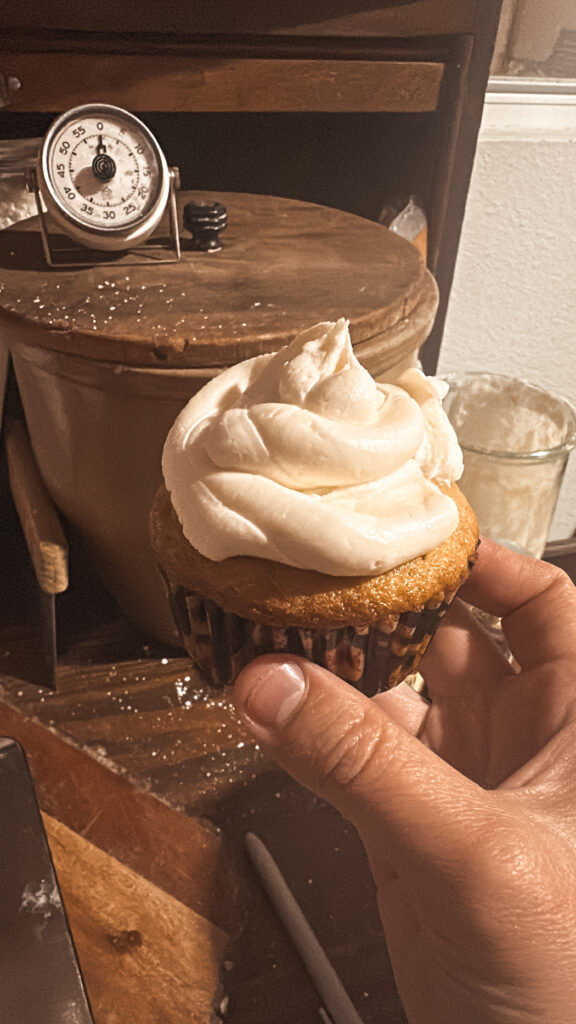
- Easy Homemade Biscuits: Quick & Delicious Recipes for Beginners
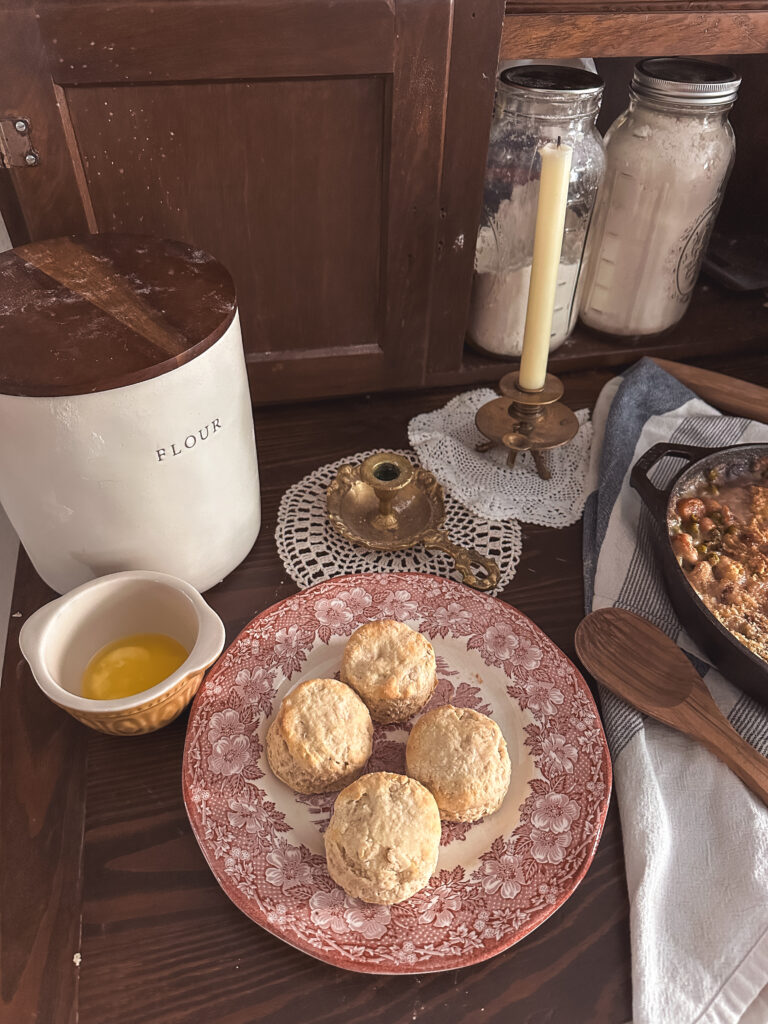
- Soft Dinner Rolls: Your Guide to Fluffy, Perfect Bakes
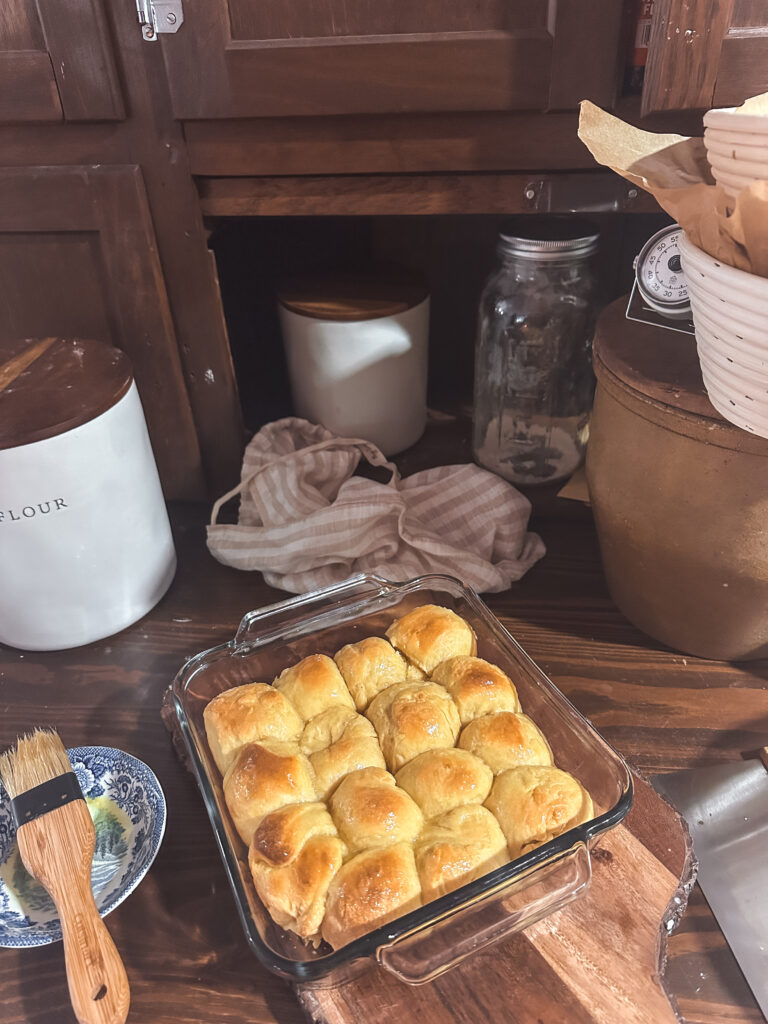
- How to Knead Dough: A Step-by-Step Guide for Perfect Bread
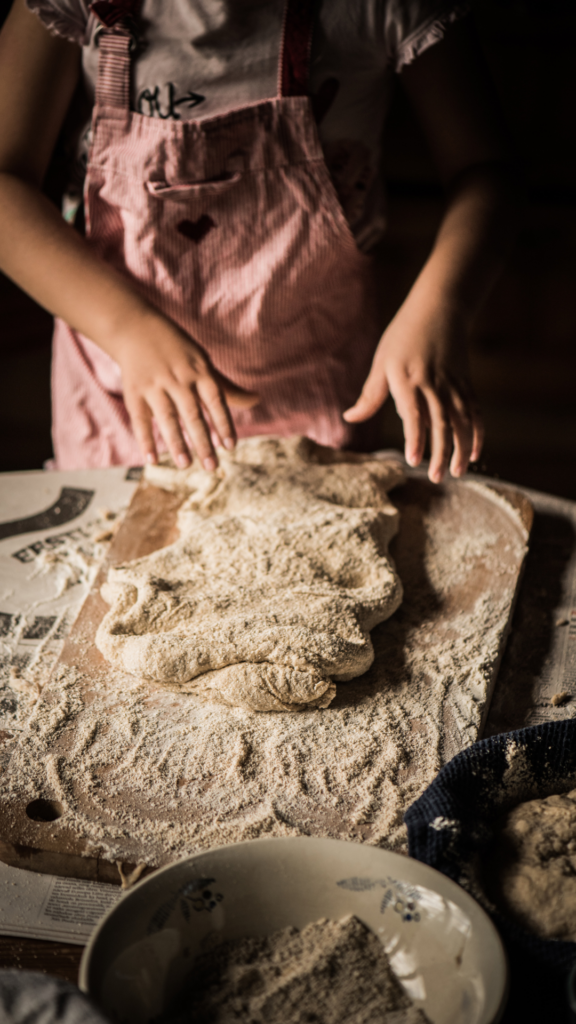
- SALT & STONE Deodorant Review: A Natural Deodorant?
- Sandwich Bread Recipe: The Perfect Loaf for Your Daily Sandwiches
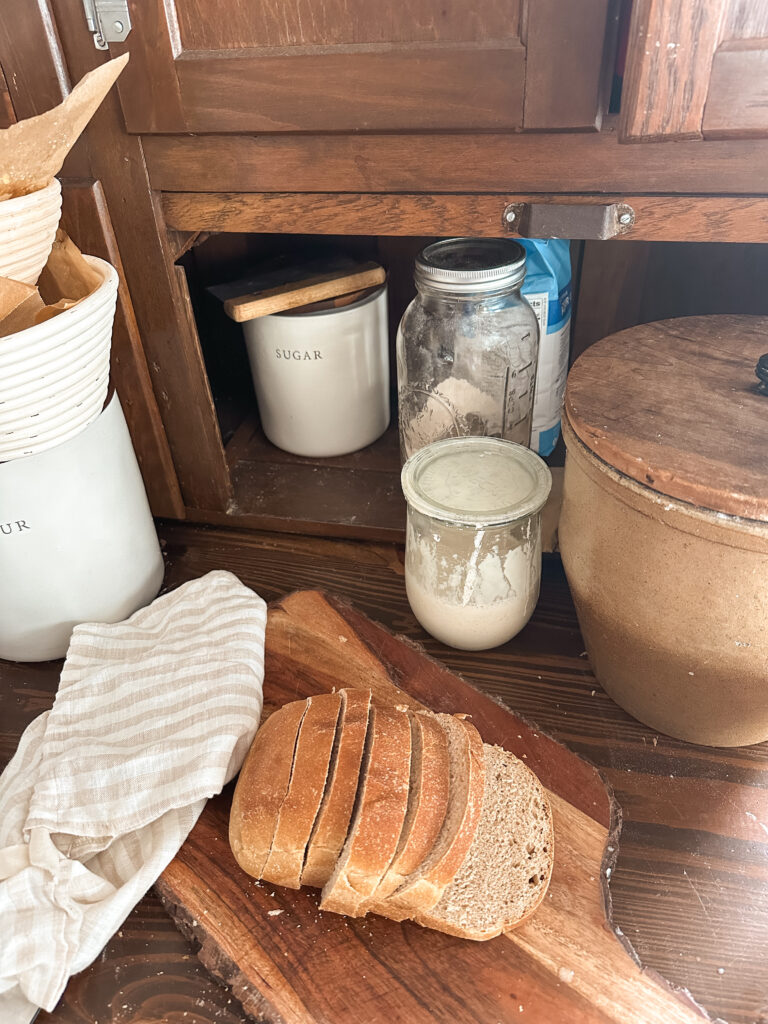
How To Maintain Sourdough Starter in the Fridge
Maintaining your sourdough starter in the fridge is an easy way to keep it fresh between baking sessions. Here are some steps to follow to keep your sourdough starter active and healthy:
- Feeding: Before putting your sourdough starter in the fridge, feed it with a 1:2:2 ratio. This means feeding one part of sourdough starter to two parts of flour and two parts of water. For example, if you have 25g of sourdough starter, feed it with 50g of flour and 50g of water. This ratio ensures that your starter has enough food while in the fridge.
- Mixing: Mix the sourdough starter, flour, and water together until well combined.
- Placing in the Fridge: Place the lid on the jar and put it in the fridge. You don’t need to wait for the starter to double before putting it in the fridge.
- Feeding Schedule: Feed your sourdough starter at least once a fortnight, always discarding before feeding. You don’t need to leave it out, you can feed it and put it straight back in the fridge if you aren’t going to bake with it.
- Going on Holidays: If you are going on holidays, your starter will survive longer than a fortnight without a feed.
- Refresh: If you want to refresh your sourdough starter, take it out of the fridge, scrape off any brown liquid, activate it with some flour and water, and leave it at room temperature for 12 hours before putting it back in the fridge.
- Water: If your tap water contains chlorine or chloramine, use filtered water or leave tap water out overnight before using it to feed your starter.
- Flour: You can use all-purpose flour, bread flour, or whole wheat flour to feed your starter.
- Hydration: The hydration level of your starter depends on the feeding ratio and the type of flour used. A 1:2:2 feeding ratio results in a 100% hydration starter.
By following these steps, you can maintain your sourdough starter in the fridge and keep it healthy and active for your next baking session.

Related Posts:
When Is Your Sourdough Starter Mature Enough For the Fridge?
If you’re new to sourdough baking, you might be wondering when your starter is mature enough to be stored in the fridge. A mature starter is essential for baking bread with good flavor and rise. Here are some things to consider before putting your starter in the fridge:
- How old is your starter? Is it less than 8 weeks old?
- Does your starter double within 2-4 hours after a feed?
- Are you prepared to feed your starter a few times before you want to bake to ensure it’s strong enough to bake with?
It’s recommended to keep your starter at room temperature and feed it twice a day until it’s mature, which can take at least 6 to 8 weeks, usually longer. This allows your starter to develop a good flavor profile and a strong yeast colony that will rise your bread easily.
Putting your starter in the fridge too soon will not allow it to reach maturity for a long time as the fridge puts it to sleep. If your starter is less than 8 weeks old, it’s not mature enough for the fridge. Leaving it on the counter and feeding it daily is always the better option.
A mature starter is bubbly, active, and has a pleasant aroma. It contains natural yeast and bacteria that work together to create lactic acid, which gives sourdough bread its tangy flavor. When your starter is at its peak, it will have expanded and risen, indicating that it’s alive and growing.
In summary, only put your mature starter in the fridge when it’s strong enough to bake with and you’re prepared to feed it a few times before baking. By following these guidelines, you’ll have a healthy and delicious sourdough starter that will last for years.
- Get Baking Today: Beginner Sourdough Starter Recipe
- Ingredients for Better Sourdough: Tips and Tricks for a Perfect Loaf
- Sourdough Bread: A Beginner’s Guide to Delicious Homemade Loaves
- Bulk Ferment vs Cold Ferment: Which is Better for Your Bread Dough?
- Can Sourdough Starter Go Bad? Tips for Keeping Your Starter Fresh
- Long Fermented Sourdough Bread: A Guide to Achieving Perfectly Tangy Loaves
- Should you Clean your Sourdough Starter Jar?
- Purchase all of my Sourdough Supplies Here!
Can I Use Sourdough Starter Straight From The Fridge?
Technically, you can use your sourdough starter straight from the fridge. However, it is not advisable to do so because you will be using a sleepy, inactive starter. This can cause many sourdough bread problems. It’s much better to wake your starter up before you bake. The way you do this will depend on how long your starter has been in the fridge and how it responds to being woken up.
Less Than 2 Weeks:
If you fed your starter 1:2:2 before placing it into the fridge and it has been in the fridge for less than 2 weeks, you shouldn’t need to do much to wake it up. If it’s only been a few days, just placing the jar on the counter and letting it warm up should be enough (this is because the yeast and bacteria will not have consumed all of the food yet). So bringing the starter to room temp and seeing if it rises is the first step. If the starter rises, you can generally bake with it as is. If it was closer to 2 weeks, we advise discarding and feeding at least once before you bake.
More Than 2 Weeks:
If your starter has been in the fridge for more than 2 weeks (but less than 6 months), it will be sleepy, but it shouldn’t take much to get it going. Take it out of the fridge and take 25g of the cold starter. Place it into a clean jar and feed with 50g of flour and 50g of water. Let it double. Then repeat. If it doesn’t double, repeat the process until it does. Your starter is ready to bake with when it’s doubled, spongy, and has a slightly domed top. It needs to be bubbly and full of life!
6 Months +
If your starter has been in the fridge for more than 6 months, it will more than likely be in bad shape. It may have a layer of black or dark purple hooch and it will smell horrendous. However, as long as there’s no mold present, you can revive the sourdough starter easily. Here’s what you need to do:
- Take 25g of the cold starter and place it into a clean jar.
- Add 50g of flour and 50g of water to the jar and mix well.
- Let it sit for 12 hours.
- Discard all but 25g of the mixture.
- Add 50g of flour and 50g of water to the jar and mix well.
- Let it sit for 12 hours.
- Repeat steps 4-6 until the starter is bubbly and full of life.
Reviving an old sourdough starter can take some time, but it’s worth it to have a healthy, active starter for your bread baking needs.
What Happens If You Leave Your Sourdough Starter in the Fridge for a Long Time?
Your sourdough starter will survive for quite some time in the fridge, even if you forget to feed it or you go away. You might notice that it has developed hooch, which means it’s hungry and has become quite sour. However, you can easily revive it by discarding and feeding it when you’re ready to use it again.
It’s worth noting that people have been known to revive a starter from the fridge after two years or more. So, as long as there is no mold, there is always hope.
If you’re worried about your sourdough starter, you can always check for mold. If you see any mold, you should remove the moldy parts and feed the remaining starter. However, if the mold has spread throughout the starter, it’s best to discard it and start again.
Something to keep in mind is that you never need to add anything to your sourdough starter. You might hear about adding pineapple juice or raisin water to get your starter going, but there is no need to do this.
If your starter isn’t rising after being in the fridge for a long time, you can try some of these tips to boost it:
- Take it out of the fridge and let it come to room temperature before feeding it.
- Feed it with a higher ratio of flour to water.
- Feed it more frequently for a few days to give it a boost.
Remember, you should never use your sourdough starter straight from the fridge. You need to take it out, discard and feed it, then use it at its peak when it doubles in size. It will be sleeping in the fridge, and if you waited for it to double before you put it in, then it’s used all its food and will be past its peak.
In terms of how long your sourdough starter will last in the fridge, if you’ve fed it before placing it in the fridge, it should be able to last two weeks comfortably without feeding. The starter will still be in good condition if just left for this amount of time. It will last much longer in the fridge, even years, without food. However, when you take it out of the fridge, it will need a lot of nurturing to get it back to peak condition. You’ll need to follow these tips to reactivate your old sourdough starter.
Related Posts:
Further Reading
If you enjoyed learning about how to store sourdough starter in the fridge, here are some additional resources that you may find helpful:
- Reviving a Starter: If you need to revive a starter that has been in the fridge for a long time, check out this post.
- Best Time to Use Sourdough Starter: Wondering when the best time to use your sourdough starter is? This article has some helpful information.
- Long-Term Storage: If you’re looking to store sourdough starter for an extended period of time, drying it out might be a better option.
- Strengthening Your Starter: Want to give your sourdough starter a boost? These 5 tips for strengthening a sourdough starter will help.
Whether you’re a seasoned sourdough baker or just getting started, these resources are sure to provide you with valuable information, tips, and tricks to help you create delicious bread, pancakes, waffles, pizza, and more.
How To Store Sourdough Starter In The Fridge
If you’re not planning to bake sourdough bread for a while, storing your sourdough starter in the fridge is a great option. This will help preserve the starter and make it last longer. Here’s how to store your sourdough starter in the fridge.

Equipment
Before you begin, make sure you have the following equipment:
- A jar with a lid
- A digital kitchen scale
Ingredients
You’ll need the following ingredients:
- 25g sourdough starter
- 50g flour
- 50g water
Instructions
Follow these instructions to store your sourdough starter in the fridge:
- Feed your starter with a 1:2:2 ratio before placing it in the fridge. This means adding 50g of flour and 50g of water to 25g of sourdough starter. Mix well to ensure everything is thoroughly combined.
- Transfer the mixture to a clean jar and screw the lid on tightly.
- Place the jar in the back of the fridge, where it’s coldest.
- Feed the starter at least every 2 weeks, even if you’re not using it. This will help keep it alive and healthy. However, it can survive for quite a while without feeding.
By following these simple instructions, you can easily store your sourdough starter in the fridge and keep it fresh for longer periods of time. Just make sure to feed it regularly and it will be ready to use whenever you’re ready to bake.
Explore Reader
SHOP
Fitbit Versa 2 Health & Fitness Smartwatch
SHOP
Bamboo Nesting storage boxes
SHOP
Ilia Super Serum Skin Tint SPF 40
SHOP
Ninja Max XL Electric Air FryeR
SHOP
Cuisinart 15-Piece Knife Set with Block
SHOP
Muse Bath Apothecary Hand Ritual
SHOP
Martha Stewart 100% Cotton Bath Towels
SHOP
Eozlink Fluffy Fur Slides
Leave a Reply Cancel reply
Watch me clean my home


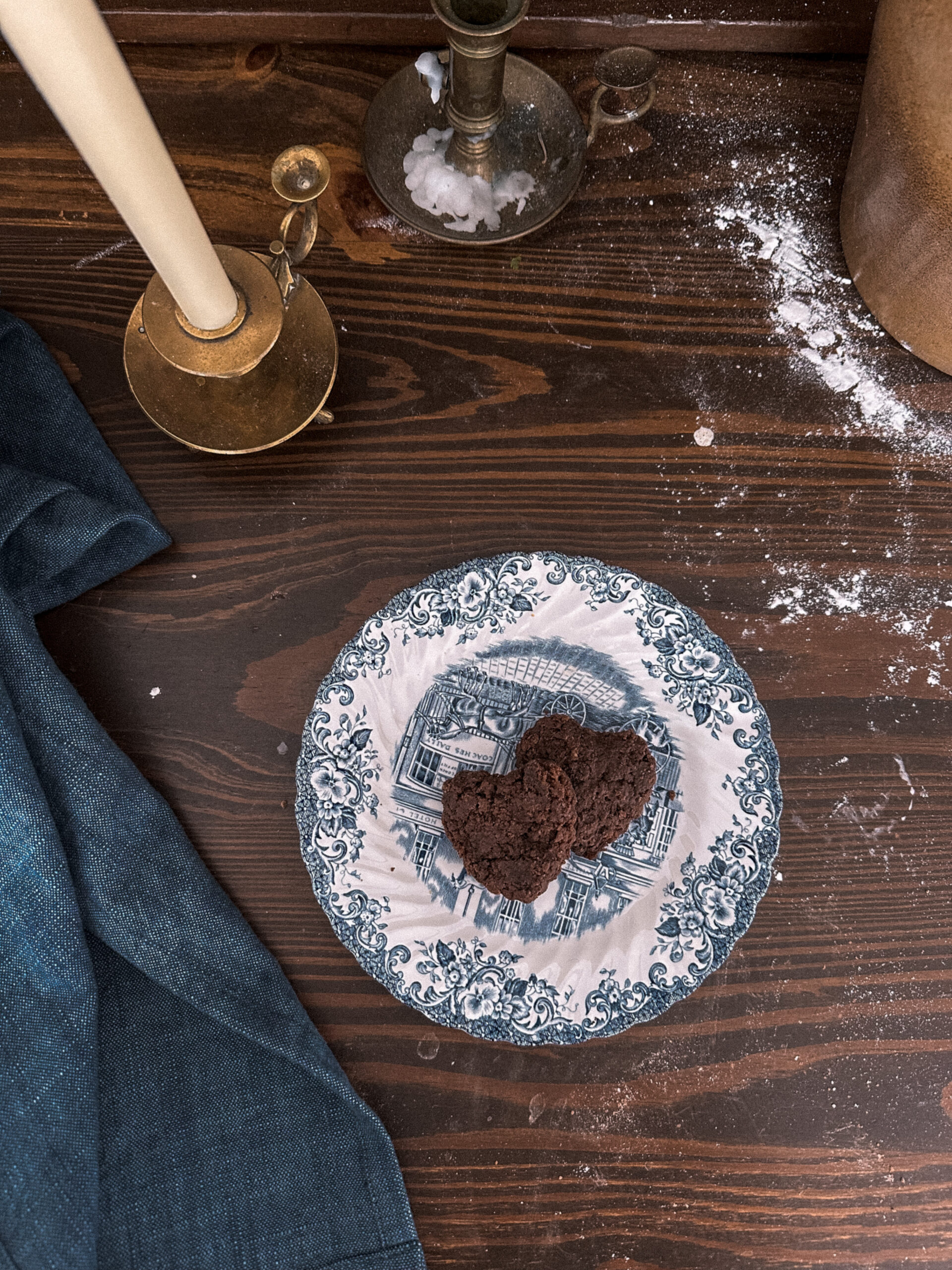
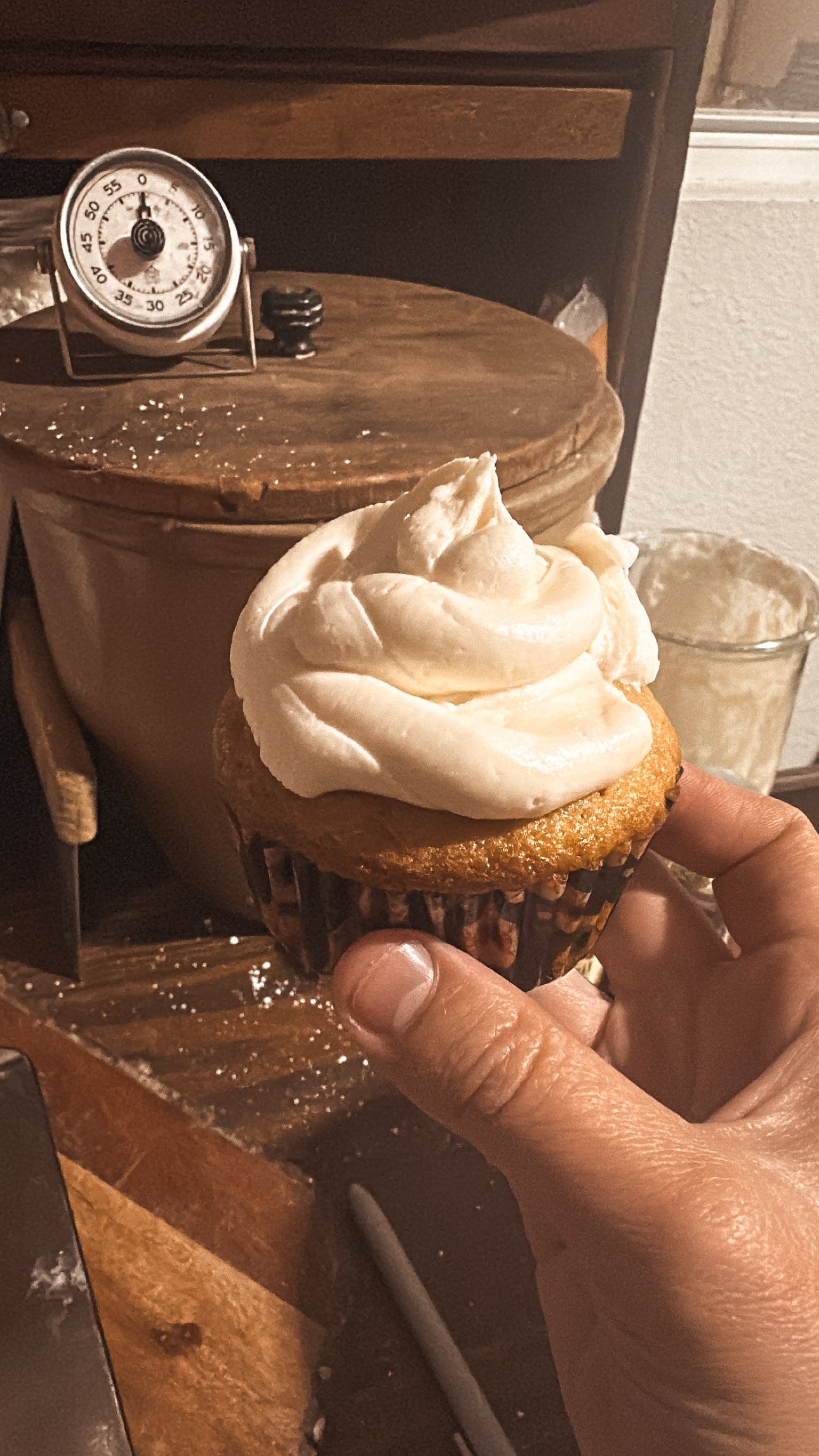


Be the first to comment